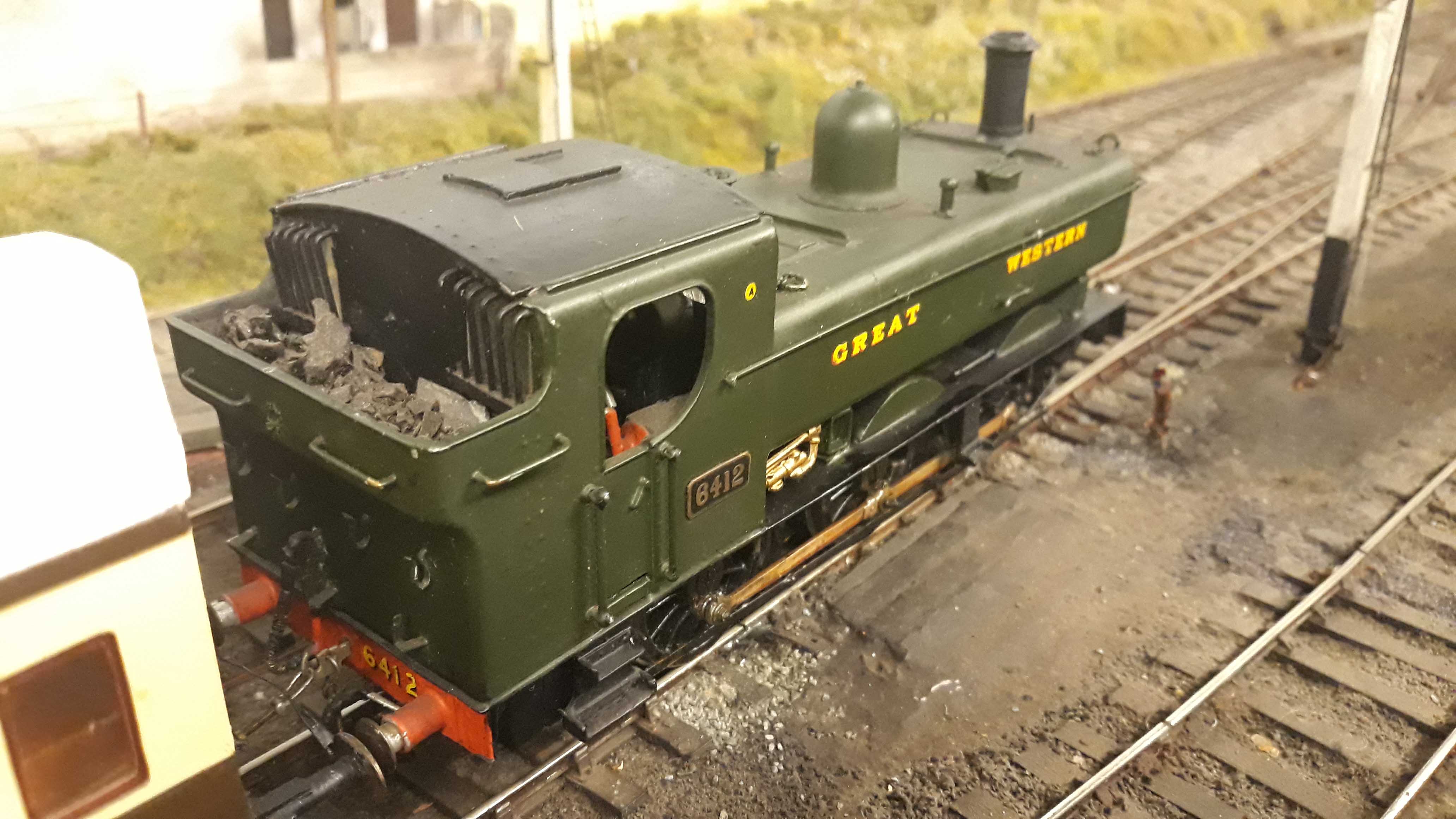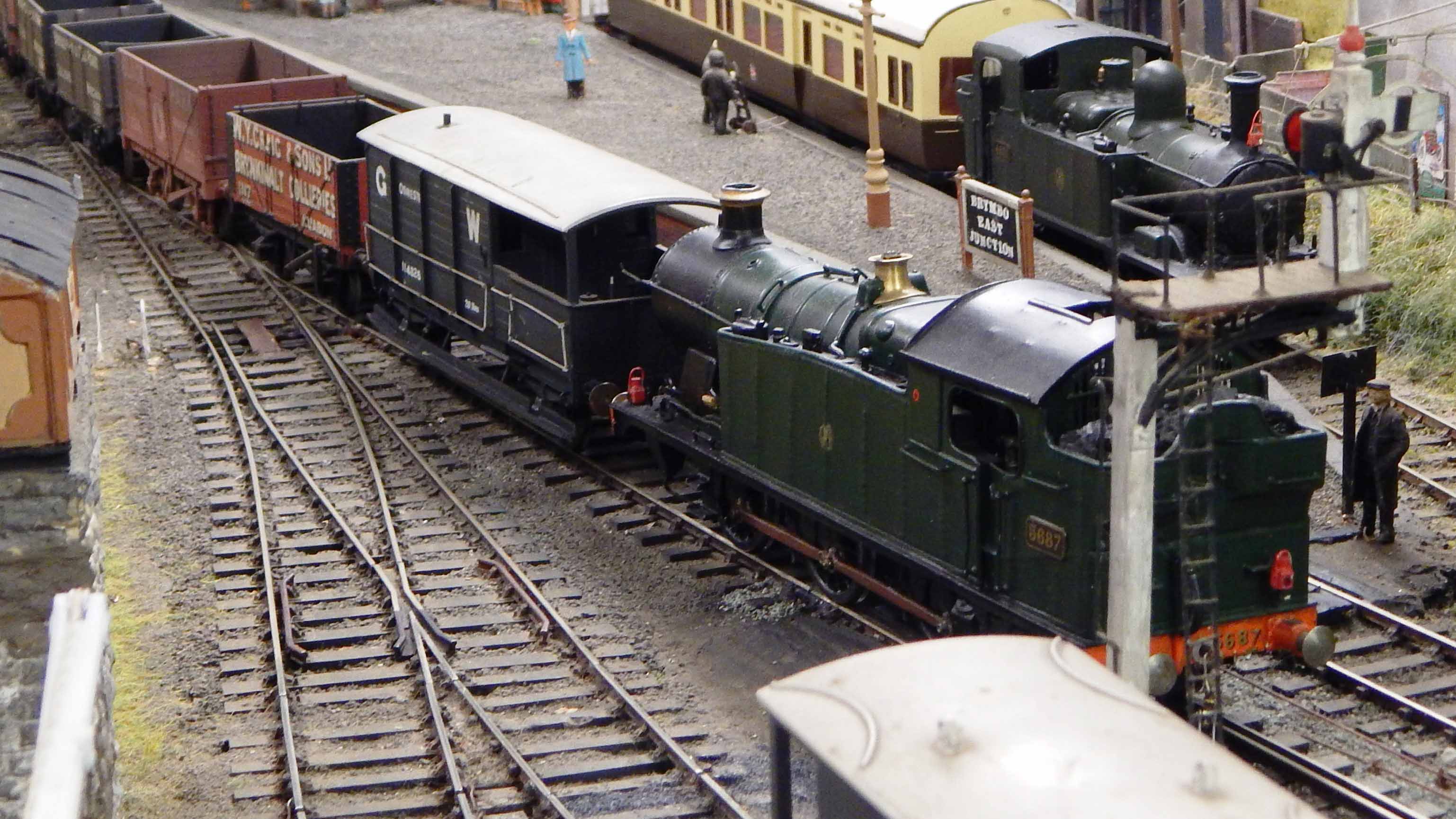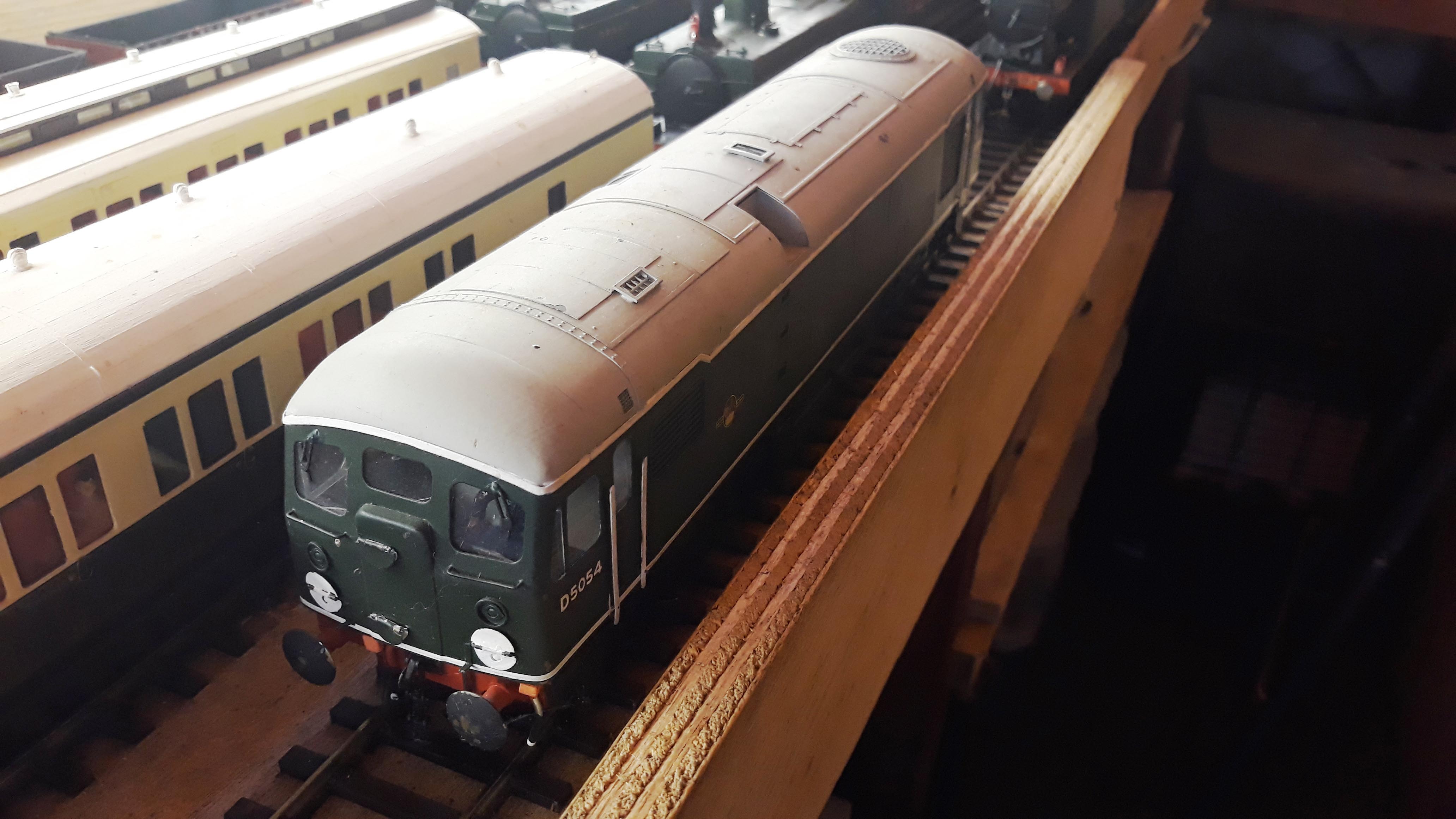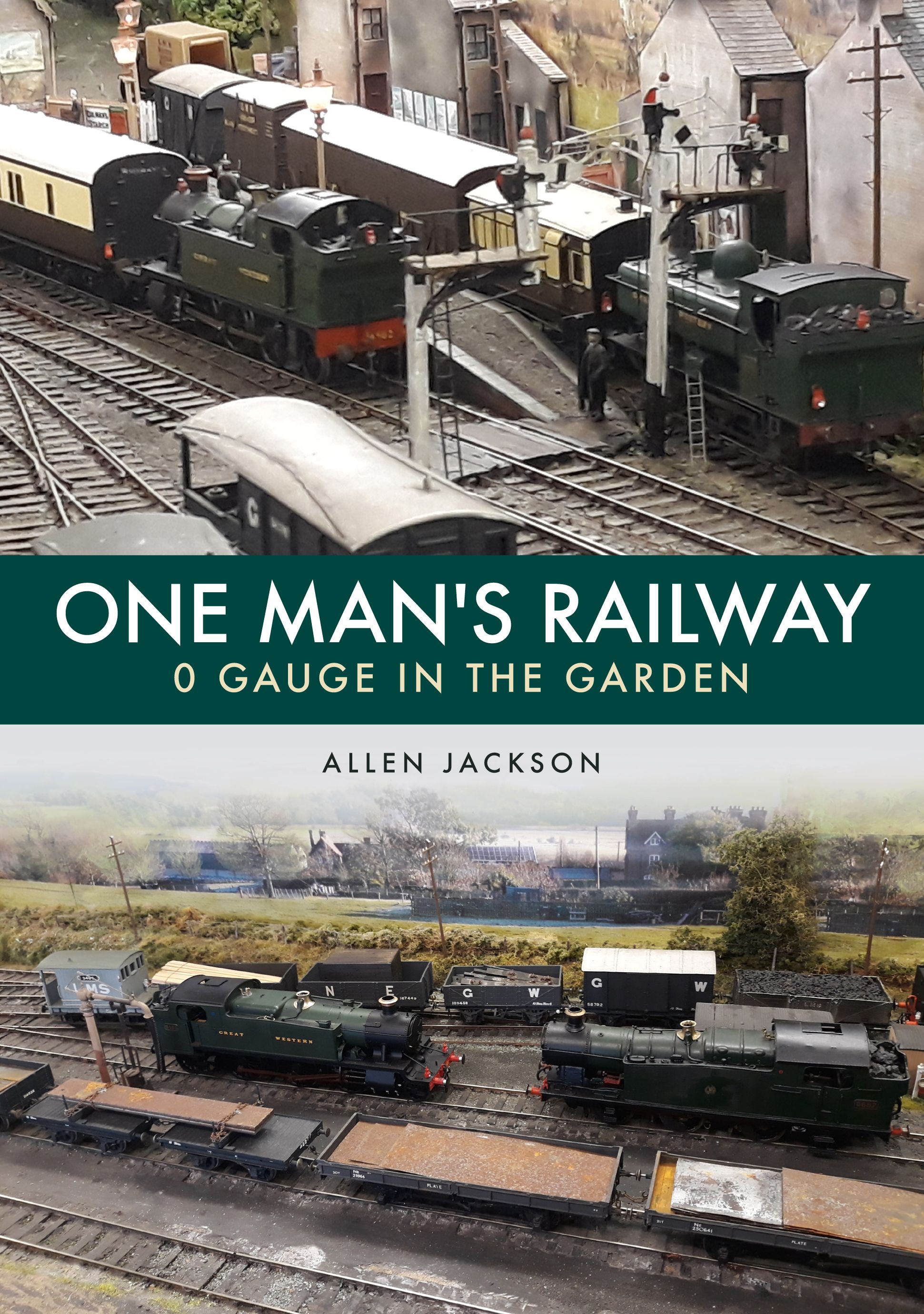WE ARE MANY.
WE ARE RAILFANS.

Railfan-Guest
September 16th, 2021
Allen Jackson introduced us to his thorough and detailed O Gauge layout in a previous We Are Railfans article. In this supplemental piece, he explains further the locomotives that make up the scenes at Brymbo East Junction including useful information about the models and the real life locomotives.
All photographs by Allen Jackson unless otherwise stated.
The model locomotives for Brymbo East Junction layout are from a variety of different sources and origins. In O Gauge we are not yet at the stage that OO or HO Scale is where a vast plethora of all types of steam, diesel and electric engines are on sale ready built and ready to run. The British outline is getting there with popular steam models and the impressive Danish company Heljan producing an exhaustive diesel range and dipping their toes into the steam engine water. The growth of ready to run O gauge is, one feels, a product of all the baby boomers having the money and time to indulge themselves with the scale.
The story at Brymbo East Junction began in 2006 where the pension’s time bomb had already been dropped and a reduced financial future was the unpalatable vision in the crystal ball. I had to invent a business to get out of this mess and finance ordinary life plus trains. This meant that loco kits were the order of the day at least until the business took off. The kit industry has taken a knock over the years as ready to run from China, mostly, has exploded.
Early days meant using Castle Kits, Haywood and Scorpio Models kits that used a mixture of white metal and etched brass for the frames and flat bits like brake gear. The motor gears and wheels were sourced elsewhere and things like pickups scratchbuilt from printed circuit board strip and phosphor bronze strip. White metal, that contained lead, is considered a health and safety problem so has reduced in popularity despite being heavy enough to provide good loco adhesion hauling properties. Pewter has taken over in the cast kit world very largely and can produce good detail and a good fit.
Buying kits ready made up from on-line auction sites like eBay is a way out of the perennial problem of not enough time to build your own or not having a life outside trains. Figure 3 (& Caption) is just such an engine and is typical of eBay buys. If the engine is put together well it’s usually just a case of fettling the chassis and pickups to make a reliable and controllable engine. The main benefit is the time saved on starting a kit from the box of bits.
Most of the steam engines are representative of those that are still to be found on preserved lines but with diesels it was a question of availability and what engines ran over these lines after 1966 when it was converted to diesel traction. Heljan provides most of the answers in this department with three interlopers. The freight trains on diesel nights are doubled up so instead of four coal trains of two full and two empty we have one full and one empty of twenty wagons each. This is a respectable load up the 1 in 60 gradient.
Heljan diesel engines are invariably double motored with a power unit at each bogie as well as a motor to run things like roof fans. They all feature bi-directional lights and in DCC mode sound chips can be fitted which are most realistic particularly at rest when idling, although hardly environmentally sound we are told. They also feature a hefty flywheel which has the effect of amplifying inertia and momentum and the engine behaves more as if it weighed 100 tons rather than nearer 100 ounces. This does mean you need a power supply than can dish out at least 3 amperes in current for a double header.
The Class 25 is represented as one of Heljan’s newer models but the mainstay of the fleet is a pair of Class 33 or ‘Crompton’. They are several years old now and whilst some prototype examples did come to the layout’s area near Shrewsbury on passenger trains they are exclusively freight engines at Brymbo East Junction. They have the early ‘D’ prefix on the number for diesel as there were Western Region (ex-GWR) steam engines that had four digit numbers too and they were anxious to avoid number confusion in those pre-computer, pre-TOPs days. There are several Class 33s on preserved lines.
Their most famous early exploit was on freight trains from the depot of a cement manufacturer at Cliffe in Kent, south east of London to Uddingston just south east of Glasgow, a distance of about 450 miles. This is a long way in Britain but nothing like the prodigious mileages of some trans-continental services in North America. They started the duty in about 1962 and took over from Britannia Pacific steam locomotives. The train would pass through York station at lunchtime where I saw it many times. There was a suggestion that the class 33s were switched at York but I never personally saw them change engines there. It is likely as the Southern Region drivers would be out of time shift wise by then and North Eastern Region drivers would not know the Class 33.
A Class 47 is a standby engine, as it is so large, and a Bachmann Class 24 is the dual motored version so able to keep up with the Heljan engines on hauling power. There is a kit built single diesel railcar to keep the last vestiges of a passenger service going and trip workings are handled by the DAPOL 08 shunter/switcher. The first acquired Heljan diesel was the Class 35 Hymek that does its turns with the other Bo-Bo configured engines. The sequence of the diesel nights is much simplified in sympathy with what the railways became in the period and the whole sequence takes two operators about 1½ hours.
We retain the 19th century operating instruments and block apparatus as that too was retained by British Rail until the end of railway traction in 1982.










 Some of the real locomotives behind the O Gauge models can still be seen at a number of heritage railways. Clockwise from top-left are: Class 25 D7612 at Minehead Station, Class 35 'Hymek' D7018 at Bishops Lydeard Station, Class 33 D6575 at Minehead Station and GWR no.6412 at Totnes Riverside Station. Photos by Joe Rogers.
Some of the real locomotives behind the O Gauge models can still be seen at a number of heritage railways. Clockwise from top-left are: Class 25 D7612 at Minehead Station, Class 35 'Hymek' D7018 at Bishops Lydeard Station, Class 33 D6575 at Minehead Station and GWR no.6412 at Totnes Riverside Station. Photos by Joe Rogers.
 O Gauge in the Garden is available to buy through Amberley Books.
https://www.amberley-books.com/one-man-s-railway-0-gauge-in-the-garden.html
O Gauge in the Garden is available to buy through Amberley Books.
https://www.amberley-books.com/one-man-s-railway-0-gauge-in-the-garden.html



